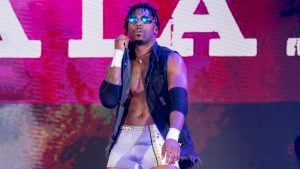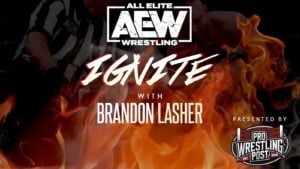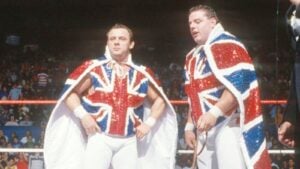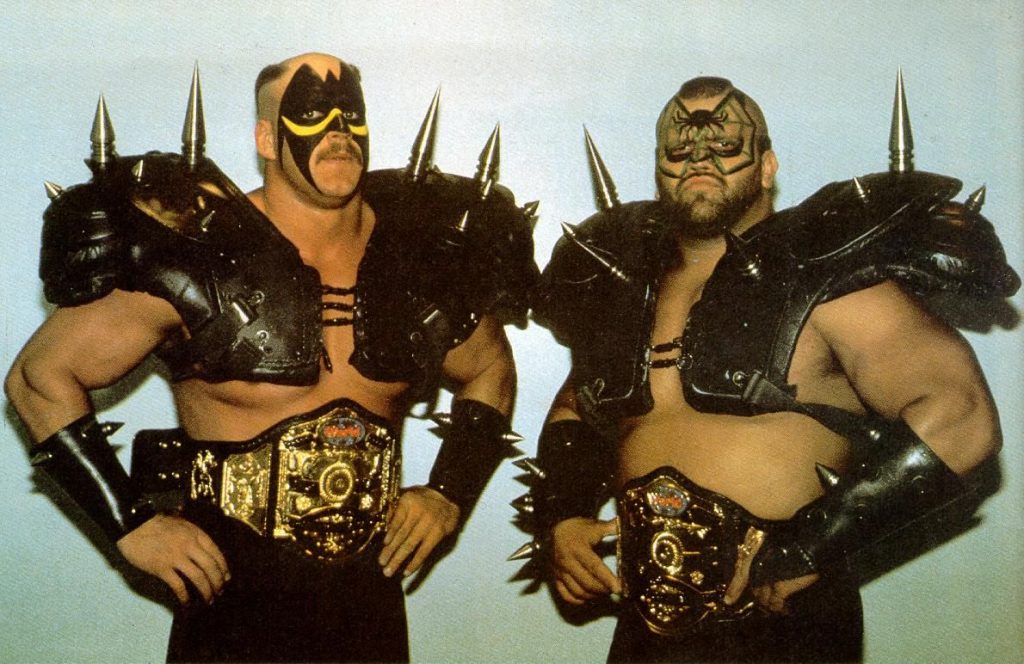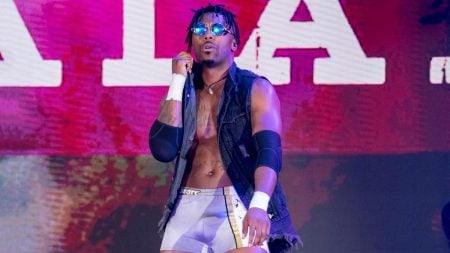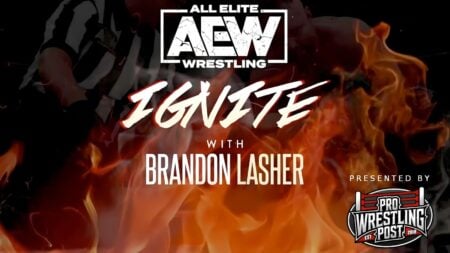The duo known as Hawk and Animal, the Road Warriors were arguably the most dominant tag team of their generation. Is success all self-made, or do some come from the support and guidance come from those around them?
For Michael Hegstrand and Joseph Laurinaitis, that question had been pressed upon. Throughout the 80s and into the 90s, The Road Warriors were unquestionably the most dominant team of their generation.
However, in exploring their legacy, it is essential to isolate where they came from, their matches, and overall crowd appeal even today. As their story unfolds, it began in Georgia Championship Wrestling.
Towards the middle of the 1980s, Road Warrior Animal was initially a singles wrestler. He competed under the name ‘The Road Warrior’.
At the time, the booker was Ole Anderson, and Animal’s earliest appearance resembled that of an officer. When he was paired with Hawk, they were brought in to replace Paul Ellering’s team.
As a unit, Hawk and Animal quickly rose to prominence in the promotion. Their size, look, and overall appeal connected with audiences.
The Road Warriors | How They Came To Be
“I started laughing,” Laurinaitis said in his bio, The Road Warriors: Danger, Death and the Rush of Wrestling. “I knew this guy.
It was Mike Hegstrand, the future Road Warrior Hawk. Even though we didn’t really know each other that well, we were both bouncers on the local scene with reputations of not taking any crap.
Back then, guys like us were aware of each other.”
– Animal upon meeting Hawk initially.
Stories emerged that those booked to face them would leave the arena. They would high, low, and everywhere in between. Their dominance, indeed, at the time, broke traditional booking.
As many have heard in the past, typically, a wrestler earns a right of passage. For Hawk and Animal, they were so remarkably convincing in their characters they didn’t face those same obstacles. It could be seen as both a blessing and a curse. Their stiff working style made them believable in the ring.
As part of the storyline at the time, Hawk and Animal said they didn’t need a manager and dropped Ellering. However, it would be a brief booking decision as Ellering once again resumed his role as their manager in early 1984.
It was while there that with Ellering as their manager, The Spoiler and Jake’ The Snake’ Roberts, the stable known as ‘The Legion of Doom’ was complete.
The Legion of Doom And The Road Warriors Were One In The Same
One of the most noted things about the name Legion of Doom was that at any given time, they used either name. Both The Road Warriors and The Legion of Doom names became synonymous with them.
Road Warrior Animal has stated that the name Legion of Doom initially came about from the Super Friends children’s cartoon. As their time together began to evolve, so did their look.
Often the mohawk and reverse mohawk that they sported were accompanied with facepaint. However, the face paint then began to have a more distinct and cleaner presentation. From simple lines of paint, their facepaint moved towards being that of shapes and solid figures like a spider.
Long before copyrighting of music became a concern, the duo would come to the ring to Black Sabbath’s ‘Iron Man.’ The heavy guitar riff was met with an enormous ovation signifying that they have arrived.
It should also be noted that their look was inspired by the Mel Gibson film The Road Warrior about a post-apocalyptic society. Their spiked adorned football shoulder pads immediately stood out.
American Wrestling Association
After they left Georgia, Hawk, Animal, and Paul Ellering joined Verne Gagne’s American Wrestling Association. In the Summer of 1984, they captured the AWA Tag Team Championship.
The problem was while they were booked as heels, their ability to decimate opponents changed the fans’ reaction to them. Fans continued to be drawn to these two larger-than-life characters that came in, crushed their opposition and left.
The Road Warriors time in the AWA then became split with their time in Jim Crockett Promotions and the NWA. They would appear for both promotions as the time often working in cross-promotional events.
Their time in the NWA also saw them compete in Japan. During their time in the land of the rising sun, The Road Warriors competed for All Japan Pro Wrestling. While there, their impact was also felt by Japanese audiences.
Much like the arrival of a superhero or rockstar, the Road Warriors were all over the media. Stories and pictures filled the pages of the team during their time competing for AJPW. In March 1987, Hawk and Animal defeated Genichro Tenryu and Jumbo Tsuruta for the NWA International Tag Team Championship.
They were the last team to defend the titles before the titles were unified with the PWF World Tag Team Championship. It would be nine years before they would return to Japan.

The Road Warriors |
From The NWA To Japan
Over five years, their time working tours of Japan were also met with their time competing for the NWA/WCW promotion at the same time. They won the Jim Crockett Sr. Memorial Cup Tag Tournament, faced the Midnight Express in a Scaffold Match, competed in Wargames alongside Nikita Koloff and Dusty Rhodes against The Four Horsemen.
They even captured the NWA Six-Man Tag Team Championships with ‘The American Dream Dusty Rhodes as well.
The teams’ feuds led to a feud with a duo that was compared to Hawk and Animal. The Barbarian and The Warlord, who competed as the Powers of Pain, resembled the Road Warriors.
Once their entrance gear was off, the Mohawks and Face pain were identical to their look. It would be the first time they would face a team that would be their equals physically.
Unfortunately, a feud’s success works when the story told benefits all involved. If only one team remains supreme, then only one team benefits. In this case, the Powers of Pain were not that team.
The Road Warriors |
Their Initial Departure from World Championship Wrestling
For all the team had achieved in the ring, Hawk and Animal were surrounded by some controversy. In 1988, Turner Broadcast System Television had given strict orders that blading was not allowed.
However, during an episode of The Road Warriors removed a spike from their entrance gear attempting to gauge out the eye of Dusty Rhodes. The action led to Rhodes being fired at the time as he was the booker and made the decision.
Despite this story (behind the scenes), fans continued to show their support for the duo. They feuded with the likes of The Varsity Squad, SkyScrappers, Steiner Brothers, and Samoan Swat Team. Hawk and Animal left WCW in 1990 and came to the WWF.
When they joined Vince McMahon’s World Wrestling Federation, the use of the name ‘warrior’ was left behind. The Legion of Doom would be what the team were known as moving forward.
The dream feud at the time was finally going to happen. Much like dream matches at the time between Hogan and Flair were talked about, so was a battle between the Legion of Doom and Demolition.
If Hawk and Animal were Nightmare on Elm Street’s Freddy Kruger, then Ax and Smash were Friday The 13th’s Jason Voorhees. It was a meeting of originals facing replicas.
The Dream Matches
Unfortunately, much like the feud with the Powers of Pain, this feud also didn’t materialize as it should have. Ax was facing real health issues. This issue made performing to the same degree that he once had against Hawk and Animal virtually impossible.
Despite Smash continuing on with Crush, it wasn’t the same feud. While they moved on to face the likes of the Nasty Boys and win the tag team championship, it wasn’t the same.
The decision to incorporate a character called ‘Rocco’ that served as inspiration upset Hawk. After they appeared at Summerslam in 1992, Hawk left the WWF. Animal remained with the company and completed his contractual obligations.
Over the course of the next few years, Hawk and Animal don’t compete. Animal is recovering from a back injury, and Hawk returns to Japan. During that time, Hawk teams with Kensuke Sasaki to form The HellRaisers.
What is interesting about the formation is that the duo embraces the ‘Warrior’ name but is referred to individually as Hawk Warrior and Power Warrior. Together they found success as the IWGP Tag Team Champions and making it to the semi-finals of the 94′ Super Grade Tag League tournament. The team split up in 1995.
The Road Warriors |
The Return of The Rush
Once Animal could resume competing, an opportunity once again presented itself in the World Championship Wrestling. Hawk and Animal’s return saw them face world champions Harlem Heat and The Steiner Brothers.
As quickly as their time in WCW came, it quickly went. They competed for the company for only half the year. After departing WCW, The Road Warriors returned to Japan and surprised fans with an unexpected return on one edition of Monday Night Raw. The latter part of the nineties saw them feud with The Nation of Domination and The Hart Foundation.
After recapturing the championships against The Godwins, they would then lose the titles to the New Age Outlaws. Despite their best efforts, the team of Hawk and Animal would never reclaim the championships.
On-screen animosity led to an apparent disbanding of the team. The following year the duo would be rebranded LOD 2000. The new look and attire of the team were also met with a new manager. Sunny would now accompany the team to the ring.
It seemed as though there were constant changes applied to the team. Much like Crush was added to the duo of Demolition years earlier, Darren’ Droz’ Drozdov was added to this duo as well.
Storylines That Didn’t Sit Well With Them
Their longtime manager Paul Ellering would then turn on them and join the Disciples of Apocolypse. It was merely difficult for fans to buy-in to their tension after being together for so long. The storyline feuding among them ultimately didn’t sit well overall.
Hawk’s real-life demons often played into his ability as a performer. Therefore, to have it played into a storyline was a little too close to the chest. After both Hawk and Animal voiced their issues with the storyline, it was dropped. The duo was part of a couple of matches but left the company in 1999.
After not being booked to win championships at the end of their time in the WWE, they continued to compete. They returned to Japan, where they found a great deal of success in the late 1980s.
While competing for All Japan Pro Wrestling faced notable talents such as Kenta Kobashi and Jun Akiyama. They traveled to Australia as well.
Around the turn of the century, Animal briefly competed for World Championship Wrestling alone. Hawk would continue to deal with his battles with addiction. Over the next few years, they competed sporadically either alone or together, including once against TNA/IMPACT Wrestling against Chris Harris and James Storm, ‘America’s Most Wanted.’ The turned back the clock in facing former adversaries, The Headshrinkers.
The Memories
After the passing of Michael’ Hawk’ Hegstrand, The Road Warriors were no more. There were attempted reincarnations of the duo. Whether it was with Heidenreich in the WWE or with Kensuke Sasaki as the Hell Warriors in Japan, the authenticity of what was special about them could not be replicated.
While the life and times of Hawk and Animal are significant as a tag team, so are the life and times of them as individuals.

